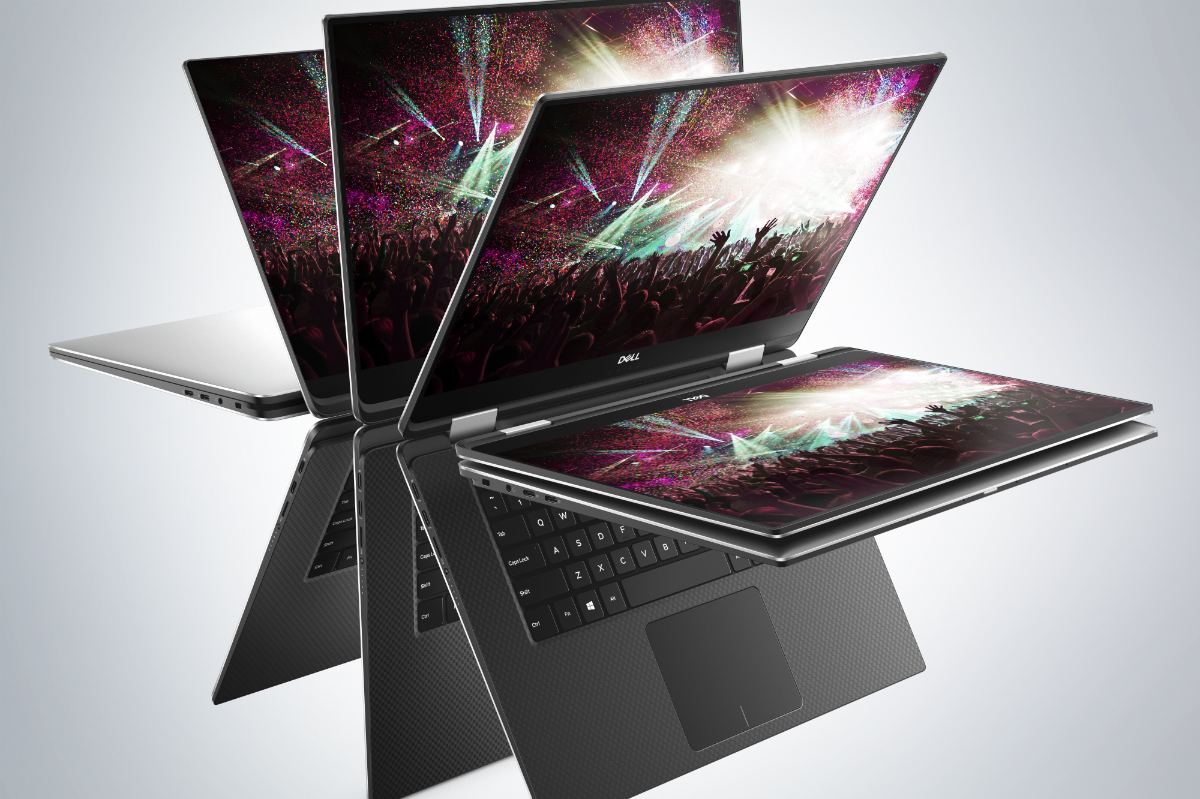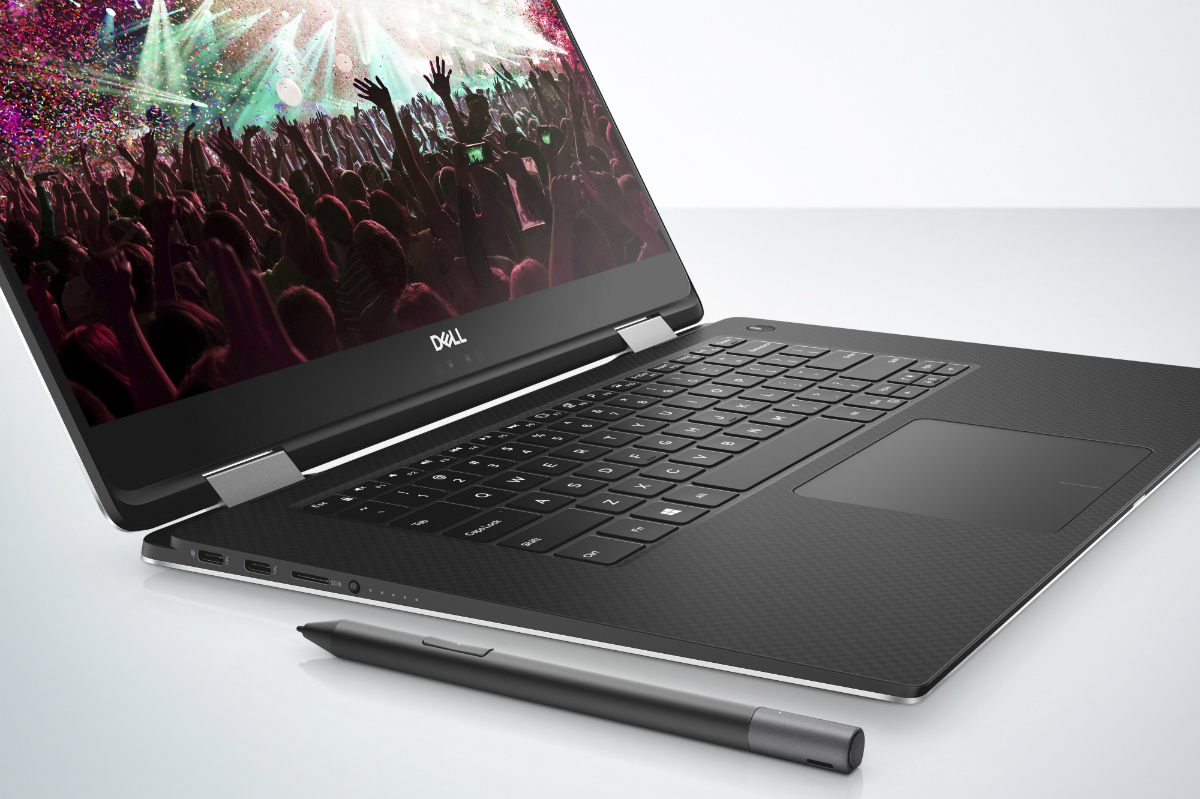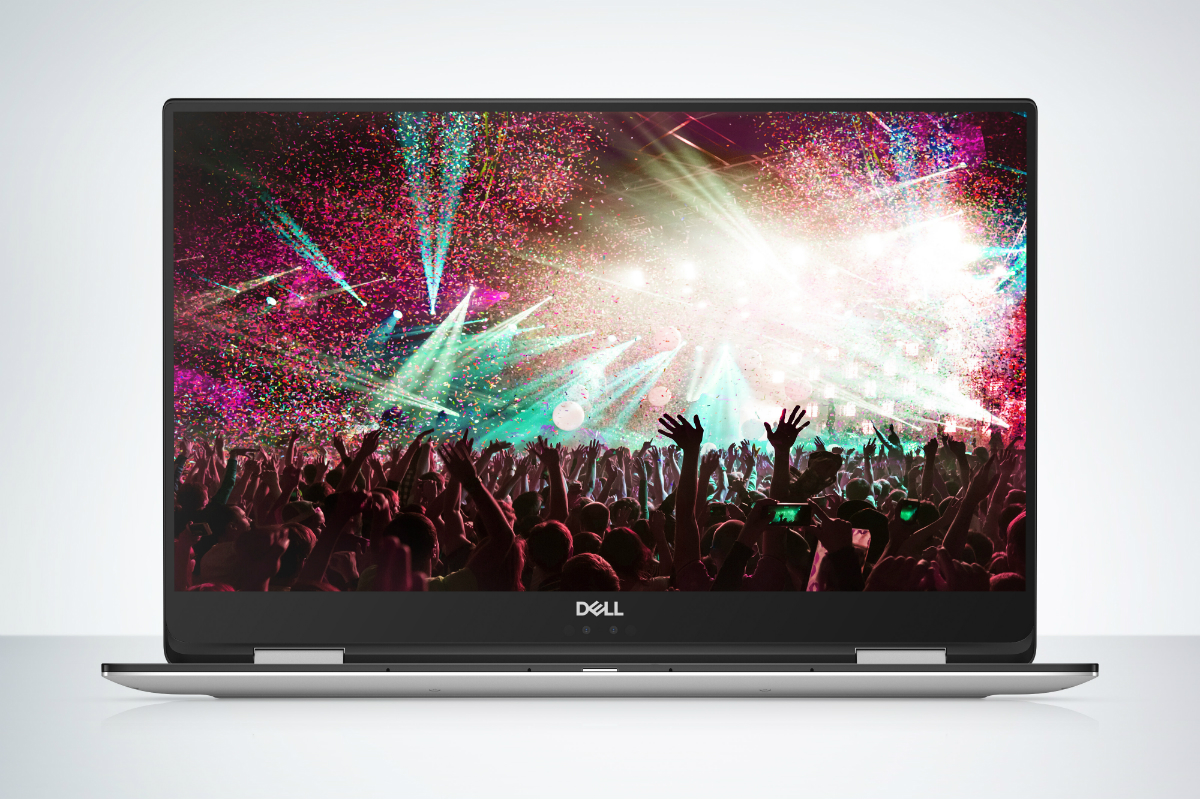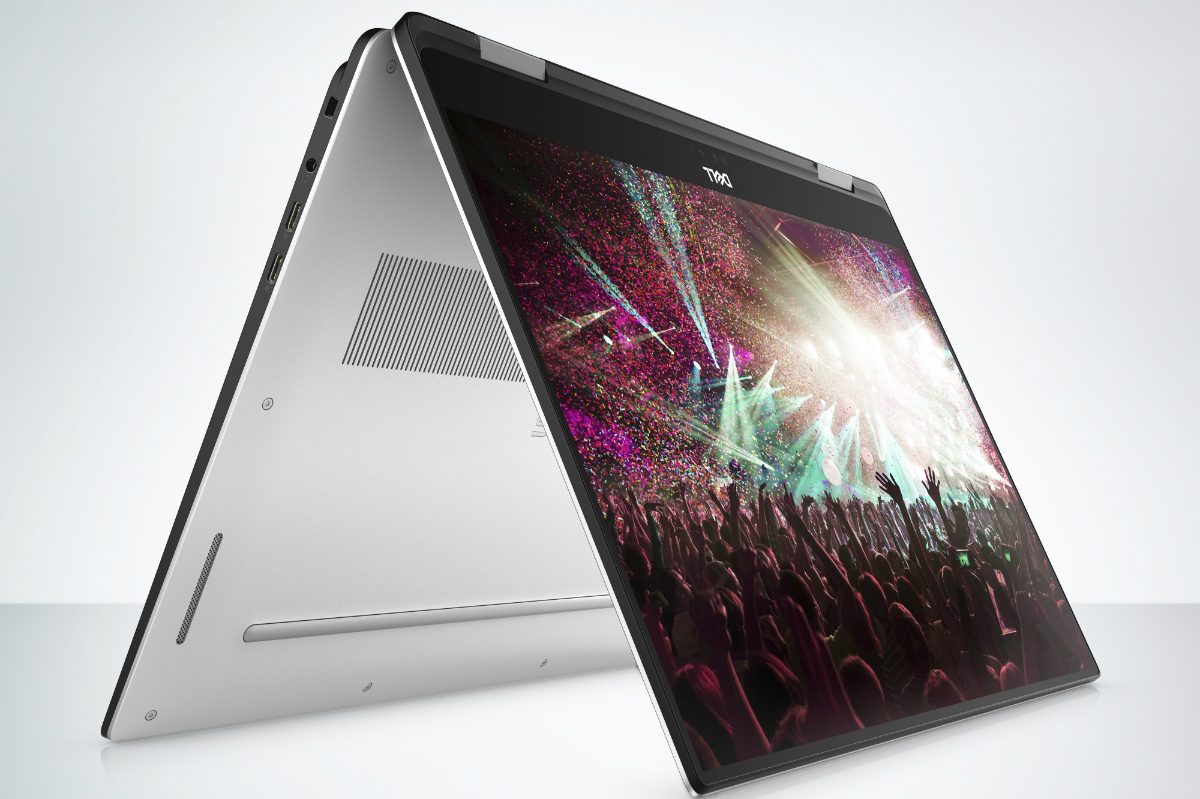Dell XPS 15 2-in-1
Key Specs
- Intel 8th-gen Core i5-8305G or i7-8705G CPUs
- AMD Radeon RX Vega M GL GPUs with 4GB RAM
- Up to 16GB RAM, up to 1GB PCIe SSD
- 4K UHD next-gen InfinityEdge display
- 100 percent AdobeRGB
- Gore thermal insulation
- 16mm thin
- Maglev keyboard
- Dell Premium Active Pen with 4,096 levels of pressure sensitivity
In a move that’s reminiscent of Microsoft’s Surface Book 2 upsizing, the new XPS 15 2-1-in is the spitting image of its smaller sibling. Essentially, it looks like Dell simply took the XPS 13 2-in-1 and blew it up, while scrunching various design elements like the InfinityEdge bezels to keep everything proportional. In terms of materials, the XPS 15 2-in-1 utilizes a similar all-aluminum chassis with carbon fiber lining the keyboard deck for a comfortable feel.
According to Dell, the new machine will arrive in spring 2018. It sports a “next generation” InfinityEdge display that will offer up 4K UHD (3,840 x 1,920) resolution and 100 percent coverage of the AdobeRGB color gamut. That lovely-sounding display will be powered by an AMD Radeon RX Vega M GPU with 4GB of dedicated RAM, to go along with eighth-generation Intel Core quad-core Kaby Lake-G CPUs. According to Dell, these components combined with a 75 watt-hour battery will allow for up to 15 hours of battery life.
The XPS 15 2-in-1 will also be remarkably thin, at just 16mm, making it what Dell calls the “smallest, thinnest 2-in-1” in its class. Certainly, 16mm is thinner than some of the competition, such as the Surface Book 2 15, the HP Spectre x360 15, and the Lenovo Yoga 720 15. Dell also touts the use of Gore Thermal Insulation as an additional measure to keep heat under control by directing heat out of the chassis and providing greater performance via less thermal throttling.
In terms of input, the XPS 15 2-in-1 will utilize a maglev (magnetic levitation) keyboard that Dell says will mimic the travel and feel of a traditional keyboard while fitting within the machine’s diminutive dimensions. And the new Dell Premium Active Pen equals Microsoft’s latest Surface Pen in its specifications, with 4,096 levels of pressure sensitivity and tilt support. The Bluetooth 4.2-enabled pen supports the Microsoft Pen Protocol (MPP) along with Wacom AES1.0 and 2.0, making it flexible as well as full-featured.
We know that the XPS 15 2-in-1 will start at $1,299 and be available in Spring 2018, but we’ll need to await further information on pricing, availability, and the full range of configuration options. It’s clear, though, that Dell is serious about improving upon it’s already excellent XPS 13 2-in-1 with a larger-format machine that promises fewer compromises than its competition.





